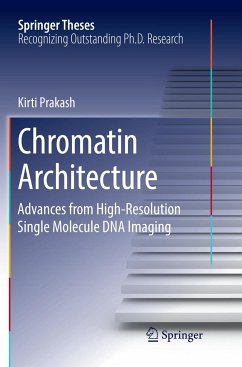This book sheds new light on the current state of knowledge concerning chromatin organization. Particular emphasis is given to the new imaging potential offered by super-resolution microscopy, which allows DNA imaging with a very high labeling density.
From the early work on chromosomes by Walther Flemming in the nineteenth century to recent advances in genomics, the history of chromatin research now spans more than a century. The various milestones, such as the discovery of the double helix structure, the sequencing of the human genome, and the recent description of the genome in 3D space, show that understanding chromatin and chromosome function requires a clear understanding of its structure.
Presenting cutting-edge data from super-resolution single molecule microscopy, the book demonstrates that chromatin manifests several levels of folding, from nucleosomes to chromosomes. Chromatin domains emerge as a new fundamental building block of chromatin architecture, with functions possibly related to gene regulation.
A detailed description of chromatin folding in the pachytene stage of meiosis serves as a model for exploring this functionality, showing the apparent interplay between structure, function, and epigenetic regulation. Lastly, the book discusses possible new avenues of innovation to describe chromatin's organization and functions.
Gathering essential insights on chromatin architecture, the book offers students an introduction to microscopy and its application to chromatin organization, while also providing advanced readers with new ideas for future research.
From the early work on chromosomes by Walther Flemming in the nineteenth century to recent advances in genomics, the history of chromatin research now spans more than a century. The various milestones, such as the discovery of the double helix structure, the sequencing of the human genome, and the recent description of the genome in 3D space, show that understanding chromatin and chromosome function requires a clear understanding of its structure.
Presenting cutting-edge data from super-resolution single molecule microscopy, the book demonstrates that chromatin manifests several levels of folding, from nucleosomes to chromosomes. Chromatin domains emerge as a new fundamental building block of chromatin architecture, with functions possibly related to gene regulation.
A detailed description of chromatin folding in the pachytene stage of meiosis serves as a model for exploring this functionality, showing the apparent interplay between structure, function, and epigenetic regulation. Lastly, the book discusses possible new avenues of innovation to describe chromatin's organization and functions.
Gathering essential insights on chromatin architecture, the book offers students an introduction to microscopy and its application to chromatin organization, while also providing advanced readers with new ideas for future research.








